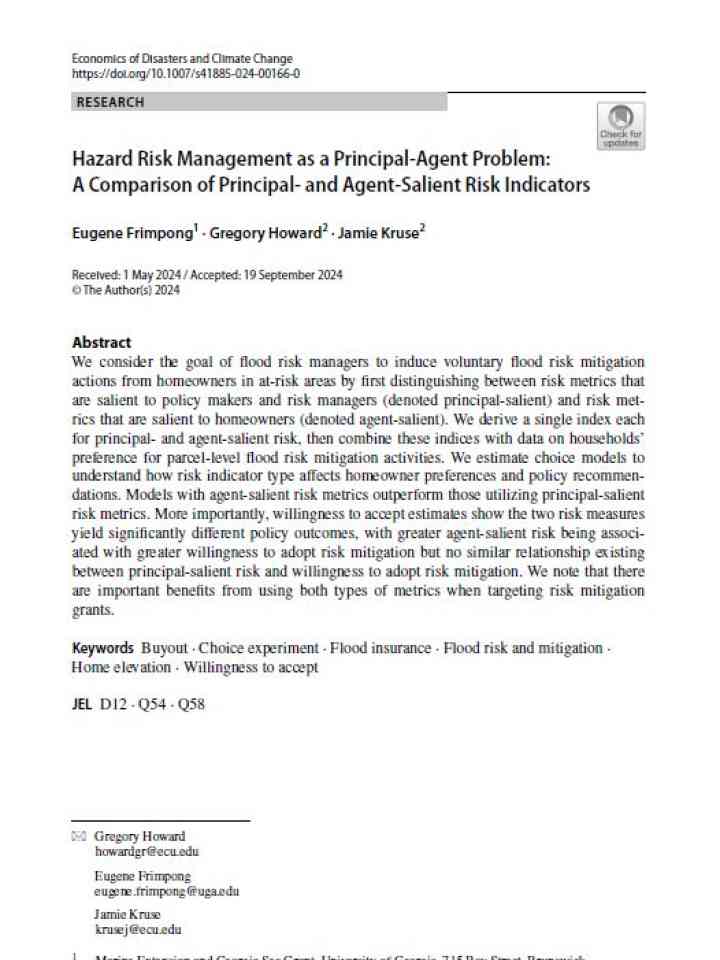Hazard risk management as a principal-agent problem: a comparison of principal- and agent-salient risk indicators
This paper considers the goal of flood risk managers to induce voluntary flood risk mitigation actions from homeowners in at-risk areas by first distinguishing between risk metrics that are salient to policy makers and risk managers (denoted principal-salient) and risk metrics that are salient to homeowners (denoted agent-salient). The authors derive a single index each for principal- and agent-salient risk, then combine these indices with data on households’ preference for parcel-level flood risk mitigation activities.
The researchers estimate choice models to understand how risk indicator type affects homeowner preferences and policy recommendations. Models with agent-salient risk metrics outperform those utilizing principal-salient risk metrics. More importantly, willingness to accept estimates show the two risk measures yield significantly different policy outcomes, with greater agent-salient risk being associated with greater willingness to adopt risk mitigation but no similar relationship existing between principal-salient risk and willingness to adopt risk mitigation. The authors note that there are important benefits from using both types of metrics when targeting risk mitigation grants.
Explore further
